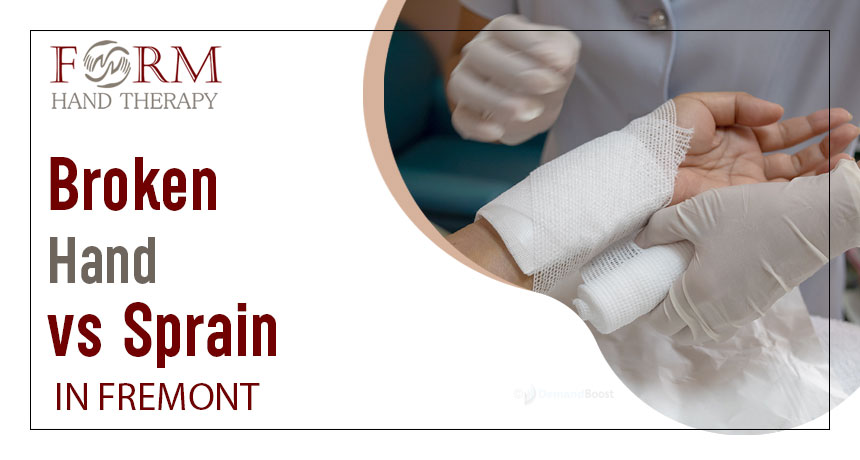Picture this: You’re out for a relaxing bike ride when your front tire suddenly catches uneven terrain. You lose control and instinctively reach out to break the fall. Now, you’re left with throbbing pain, swelling, and stiffness—wondering whether it’s just a sprain or something more serious, like a broken hand (also known as a fracture).
Accidents like this are more common than you might think—especially in the summer—and they’re a perfect example of how easily these injuries can happen. Unfortunately, many people wait days before seeking medical attention, hoping the pain will pass, only to find themselves in worse condition. We hope that’s not the case for you.
That’s why it’s so important to seek prompt care from a qualified hand physician like Dr. Besh at FORM Hand Therapy when you’ve sustained a hand injury. Led by Dr. Besh, our experienced team is equipped to diagnose and treat a wide range of common hand injuries, including sprains and fractures. While both can feel similar at first, the difference between a hand sprain and a fracture matters—a lot—especially when it comes to treatment and long-term recovery.
Broken Hand vs. Sprain: Key Signs to Help You Tell the Difference
- Anatomically: A fracture refers to a break or crack in a bone, while a sprain involves the stretching or tearing of a ligament, the tissue that connects bones at a joint.
- Pain Level: Pain varies depending on the injury’s severity, and one isn’t always more painful than the other. However, a fracture typically causes sharp, intense, and localized pain that worsens with movement or touch. Unlike a sprain, this pain usually doesn’t improve without proper medical treatment.
- Appearance: Fractures often show visible signs like deformity—the hand may look crooked, bent, or misaligned, especially if the bone has shifted. In contrast, a sprain typically does not change the shape of the hand but may cause swelling and bruising around the injured area.
- Functionality: A fracture often makes it difficult—or even impossible—to move your hand, fingers, or wrist, as well as to grip or bear weight. Sprains may cause discomfort, but some movement is generally still possible.
- Sound at Time of Injury: While a “pop” may be heard if a ligament tears, this is relatively uncommon with sprains. A “crack” or “snap” is more frequently reported with a fracture.
Get Expert Hand Sprain and Fracture Treatment at FORM Hand Therapy in Fremont
If you’re unsure whether you’ve sprained or broken your hand, it’s always best to seek medical care sooner rather than later—your hands are too important to ignore. While many sprains respond well to rest and home care, an untreated fracture can lead to chronic pain and long-term complications. The good news is that most hand injuries can be treated successfully without surgery—if diagnosed and managed early.
At FORM Hand Therapy, we prioritize non-surgical treatment options whenever possible. Depending on your injury, your care plan may include the RICE method (Rest, Ice, Compression, Elevation), splinting or casting, therapeutic exercises, hand therapy, and a personalized rehabilitation plan to help restore strength, function, and mobility.
In some cases, surgery may be necessary, and we’re fully equipped to guide you through that process as well. From accurate diagnosis to treatment and rehabilitation, we offer comprehensive care for all types of hand, elbow and wrist injuries.
Call us at (510) 350-3030 or request your appointment online today, Let’s get your hand back to full strength—so you return to living life without limits.

